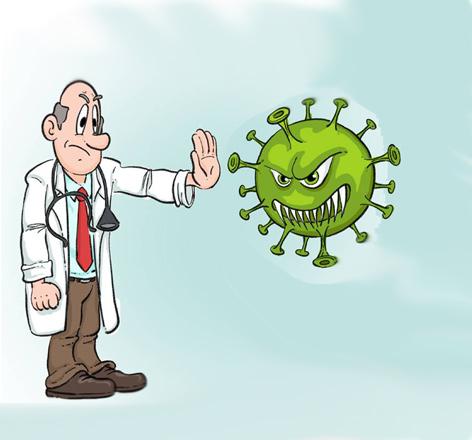You are here
Last century's epidemics far more deadly than 21st century's
By AFP - Apr 11,2020 - Last updated at Apr 11,2020

Photo courtesy of technologynetworks.com
PARIS — Before the emergence late last year of the novel coronavirus, which has now killed more than 100,000 people, the 21st century's epidemics had been far less deadly than the pandemics of the previous century.
Here are the major epidemics of the last two centuries, starting with the most recent:
Ebola: 2013-2016 and 2018-to date
The deadliest epidemic of the haemorrhagic fever Ebola broke out in West Africa in December 2013 and lasted more than two years, killing more than 11,300 people, mainly in Guinea, Liberia and Sierra Leone.
First identified in 1976, Ebola is less contagious than other viral diseases, but is particularly lethal, killing around 50 per cent of cases.
The virus re-emerged in August 2018 in the eastern Democratic Republic of Congo where it has so far killed more than 2,200. On April 10, 2020 a new case was reported, just three days before a deadline that would have marked the official end to the epidemic.
Swine flu: 2009-2010
The World Health Organisation (WHO) says 18,500 people died of "Swine flu", or H1N1, which was first uncovered in Mexico and the United States in March 2009.
The Lancet medical review, however, puts the toll at between 151,700 and 575,400.
The pandemic alert was launched on June 11, 2009 and lifted on August 10, 2010 but the virus turned out to be not as deadly as first feared.
Vaccines were rushed out, but in hindsight, the West, particularly Europe, and the WHO were criticised for overreacting at a time when annual influenza epidemics every year kill between 250,000 and 500,000 people, according to the Geneva-based UN health agency.
Bird flu: 2003-2004
The deadly H5N1 strain of bird flu killed more than 400 people, mainly in Southeast Asia, after appearing in 2003. It first ravaged poultry farms in Hong Kong, before being transmitted to humans. The WHO declared a global health emergency, but the toll remained limited.
SARS: 2002-2003
Severe Acute Respiratory Syndrome first emerged in southern China in November 2002 before sparking a health crisis in mid-2003, in particular traumatising Asia.
It killed 774 people, four fifths of whom were in China and Hong Kong. It was transmitted to humans from horseshoe bats, eventually spreading to around 30 countries. It had a mortality rate of 9.5 per cent.
AIDS: 1981-to date
AIDS is by far the most deadly epidemic of modern times: according to UNAIDS some 32 million people around the world have died of the disease which affects the immune system and leaves people vulnerable to opportunistic infections.
Today around 24.5 million people have access to retroviral drugs which, when taken regularly, efficiently stop the illness in its tracks and heavily reduce the risk of contamination.
Hong Kong flu: 1968-1970
Around one million people died of the Hong Kong flu, according to the US Centers for Disease Control and Prevention (CDC).
Transmitted around the world between mid-1968 and early 1970, it in particular killed many children. It first started in Hong Kong, spread through Asia and reached the United States in late 1968. After lying low for several months it then hit Europe in late 1969.
Asian flu: 1957-1958
Around 1.1 million people died of Asian flu, according to the CDC.
The pandemic hit in two aggressive waves. The virus first appeared in southern China in February 1957. Several months went by before it reached America and Europe.
The disease, which results in serious lung complications, in particular affected the elderly.
1918-1919: Spanish flu
Spanish flu hit a large part of the world's population in the wake of World War I, killing up to 50 million people, according to the CDC.
Striking between September 1918 and April 1919, it is considered the most deadly in history over such a short period.
Five times more people died of it than did in World War I. The first victims were recorded in the United States, before it spread to Europe and then around the world.
Its mortality rate was estimated at more than 2.5 per cent, according to the CDC.
By Olivier Thibault and Jean-Philippe Chognot
Related Articles
BEIJING — Asian countries on Tuesday ramped up measures to block the spread of a new virus as the death toll in China rose to six and the nu
By Emily BaumgaertnerIt’s a virus scientists have never seen before.
HONG KONG — Six people were killed and dozens injured in Hong Kong on Wednesday when a double-decker bus smashed into a tree, police said.Li


















